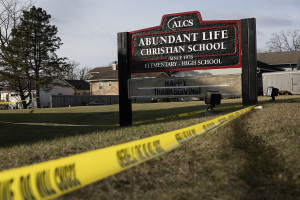Arlene: First Tropical Storm of Season Could Reach Hurricane Status
Forecasters predict 2011 as destructive as the 2005 hurricane season
Arlene, the first tropical storm of the 2011 season, is gathering strength as it makes its way West with now upgraded top wind speeds of 50 MPH. The storm is progressively gathering more energy and could reach hurricane 1 status when it hits land, according to the U.S. National Hurricane Center.
The hurricane model shows Arlene making landfall in Tampico, Tamaulipas state on Thursday, threatening an oil refinery there that produces 190,000 barrels a day.
Mexico is a top oil exporter to the United States and almost all of its exports are shipped to all refineries on the U.S. Gulf Coast.
NOAA's National Hurricane Center said in a statement today that Tropical Storm Arlene originally formed over the Bay of Campeche, in the southern Gulf of Mexico and is expected to produce heavy amounts of rainfall between 4 to 8 inches and as much as 15 inches in mountainous areas, which could cause flash flooding and dangerous mudslides.
U.S. Gulf Coast areas also need to keep a watch on the storm surge that could raise water levels by 1 to 2 feet above normal, according to the NHC.
NOAA officials said there will be a buildup of waves in the region with the potential for an uptick in rip currents throughout the Gulf of Mexico region through the end of the week. As a result, bathers and small craft operators should treat the situation with respect.
“The main threat from Arlene will be torrential rainfall falling on the parched, rocky and rugged landscape of northeastern Mexico forward into the weekend. Locally, a foot of rain can fall,” said international weather expert meteorologist Jim Andrews.
Mainly dry thunderstorms over the Southwest U.S. going into the weekend could bring a problem from fire-starting lightning strikes rather than beneficial rain.
“In order to determine how much, if any, rain reaches the desert Southwest of the U.S., we will have to see exactly how Arlene's moisture tracks and holds together while traversing Mexico. High mountains in northern Mexico along the way may screen out much of that moisture before hand,” according to AccuWeather.
What to expect during the 2011 Hurricane Season:
The National Hurricane Center predicts that it will be an above average summer with 12 to 18 named storms, six to 10 hurricanes and three to six major hurricanes, which are Category 3 and above.
National Hurricane Center spokesman Dennis Feltgen warned U.S. residents that the long-range predictions are missing an important piece of information-where the hurricanes will make landfall.
"Our models do not tell us where they are going to make landfall -- that long-range science does not exist," Feltgen said. "It doesn't matter if there are 50 storms or one, if that one storm hits you it's a really bad year, and that's the one storm you need to be preparing for right now."
Feltgen said on average the month of June has one storm every two years.
Arlene is the most used storm name of all-time.
There are six lists that continually rotate and names are only removed from them after it is determined that a hurricane was so devastating that it would be insensitive to reuse the name, according to the NHC.
The 2011 list is the same as the incredibly active and destructive 2005 hurricane season, according to NOAA officials.
Five hurricanes names were retired from the 2005 list because of their fury and record destruction. Dennis has been replaced by Don, Katrina by Katia, Rita by Rina, Stan by Sean and Wilma by Whitney.
Here is the list of names for 2011:
Arlene
Bret
Cindy
Don
Emily
Franklin
Gert
Harvey
Irene
Jose
Katia
Lee
Maria
Nate
Ophelia
Philippe
Rina
Sean
Tammy
Vince
Whitney
To track Arlene and future storms, visit: http://www.nhc.noaa.gov/





























